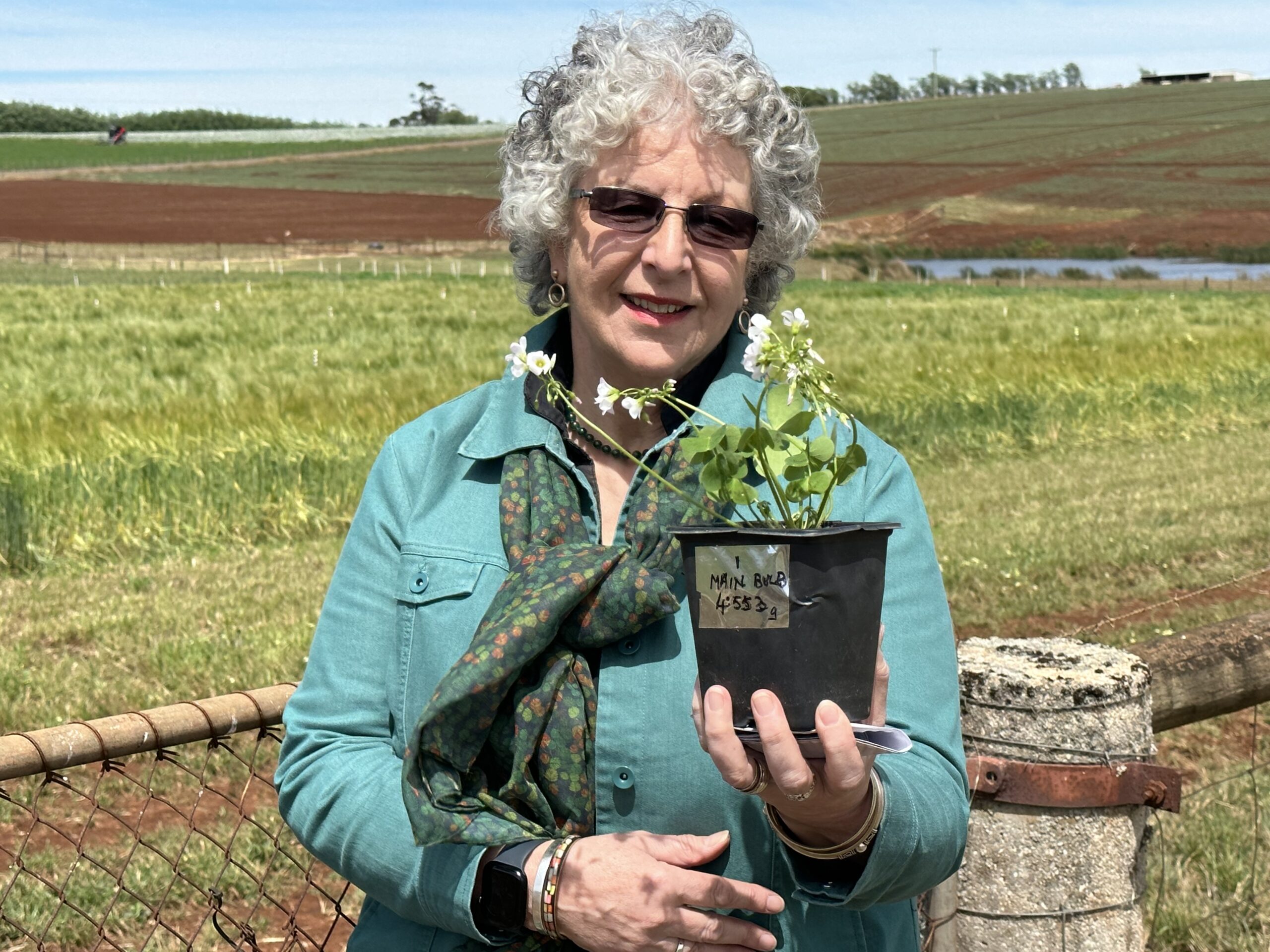Digital defence: technology to streamline farm biosecurity
30 August 2024
Unlocking productivity and efficiency on farm with hyperlocal weather
30 August 2024Many of our favourite and most profitable vegetable crops grow in the cooler regions of Australia. So, it’s no surprise that the Hort Frontiers funded research program Sustainably growing horticulture value in cool climate Australia (AS20004), led by the Tasmanian Institute of Agriculture (TIA), features a full swag of vegetable research.
Program lead, TIA’s Dr Nigel Swarts, explains the impetus for this research program.
“Climate variability affects everyone in horticulture. We know that this affects grower confidence to invest in and expand horticultural operations both on farm and into new production regions. On top of this are the major challenges of skyrocketing input and labour costs facing horticulture producers.
“This research program is a partnership with industry, co-designed with growers to address critical risks to production. It’s about finding solutions that reduce those risks so that growers can sustainably expand cool climate vegetable production into the future whilst still being profitable.”
The program spans a wide range of sectors, including vegetables, vegetable seed, pyrethrum, cherry and berry production – all key cool climate industries. However, vegetable research makes up the lion’s share, with over 10 research projects currently underway and more expected in the future. The program is also helping train the next generation of researchers, supporting six new PhD projects.
The beauty of this cool climate program is that it allows a research team to look at the whole system with crossover between disciplines such as diseases, weeds and plant nutrition research.
The hot potato puzzle
Potato disease research led by Professor Calum Wilson is like a giant jigsaw, with each research project adding one or more pieces to the puzzle. The whole growing environment of the potato crop is under scrutiny. Highly specialised research on how to disrupt disease infection and spread is complemented by systems research on how different potato pathogens interact in the soil to impact disease incidence and severity.
Dr Audrey Leo, head researcher with industry partner Simplot, describes how this feature of the program is central to sustainable production.
“Key diseases under study include potato powdery scab, verticillium wilt and pink rot. Two very novel concepts being explored to manage these diseases are ‘germinate to exterminate’ and diffuse to confuse’,” she says
The idea behind ‘germinate to exterminate’ is that you can trick dormant disease spores to germinate before the potato crop is planted using compounds extracted from potato roots. This aims to reduce the disease inoculum in the soil to a safe level for planting, with added benefits of reduced fungicide use and shortened plant back times.
The alternate strategy of ‘diffuse to confuse’ floods the soil with chemical signals that confuse the germinating spores’ tracking system. This means germinated spores are less likely to locate and infect potato roots.
The research team is using a more traditional forensic detective approach to finding critical risk factors for pink rot disease. In this project they will look at which factors favour disease survival, infection and spread.
“How cool would it be to know how old your seed potato tuber is at planting time?” asks Dr Nathan Tivendale.
Dr Tivendale says this knowledge can help growers manage their potato crops for a better result.
“Seed potato tubers have two different but related ages; chronological and physiological. The chronological age is the time from when the seed potato tuber was harvested. The physiological age is its biochemical state and affects how the fast the potato will develop once it is planted. If we know the physiological age, we can adjust how we manage the crop for better uniformity, yield and quality.”
This research aims to develop a fast, accurate and robust method for measuring the physiological age of potato seed tubers.

PhD candidate Peter Targett inspecting peas for collar rot
More peas please
PhD candidate Peter Targett has taken the next step in his mission to help farmers manage collar rot by moving from vegetable agronomy to PhD research.
“Collar rot affects massive amounts of legume crops across the world and appears as black gridling of the stem,” he says.
“After battling the disease alongside farmers for some years, it was a natural progression for me to move to a full-time research position in an area where I thought I could help.”
The research is already changing and shaping industry understanding of the issue.
“Most prior Tasmanian research on collar rot had been solely focused on Ascochyta, whereas a surprising outcome from our survey was that Fusarium is causing very similar symptoms and appears to be just as aggressive and widespread a problem across Tasmania,” says Dr Targett.
Dr Targett has now moved to an experimental phase of research where he plans to untangle some of the mysteries surrounding this disease complex.
“In the relatively wet North West Coast region, there have been inconsistently severe outbreaks of foliar Ascochyta blight, with some farmers experiencing total crop loss less than 5km away from reasonably good crops,” he says.
“I want to see if collar rot as caused by Ascochyta or Fusarium predisposes plants to being more susceptible to these airborne spores. This knowledge should help us to best target when and where to apply control measures.”
One weed at a time
Weeds are one thing all vegetable growers have in common, and one weed in particular has TIA PhD researcher Laurie Krauss fired up.
“I first really noticed oxalis in a young pyrethrum crop. We played spot the pyrethrum because there was so much oxalis and very little pyrethrum,” she says.

PhD candidate Laurie Krauss with her weed nemesis, Oxalis sp. Image courtesy Tasmanian Country
“It got me thinking more about this weed, how widely spread it is and if there could be a clever way to manage it.”
Oxalis has many characteristics that make it a significant weed in cool climate intensive cropping systems. It regenerates from multiple underground bulbs which are difficult to control. These bulbs like to hitch a ride on machinery, which spreads it rapidly and dramatically to new areas.
Laurie wants to better understand oxalis and use this knowledge to break its defences. Understanding the physiology of the weed, including how to break bulb dormancy, is key. This knowledge will help pinpoint when oxalis is most vulnerable to herbicide and other management strategies.
Expanding cool climate research
Dr Swarts said says whilst the sustainable cool climate program is currently hosted primarily in Tasmania, there are excellent opportunities for other cool climate regions to come on board.
“The rest of Australia is eyeing our cool climate regions with interest as climate variability has more and more impact. We want to make sure that vegetable production in these areas is sustainable and less risky whilst remaining profitable.”
